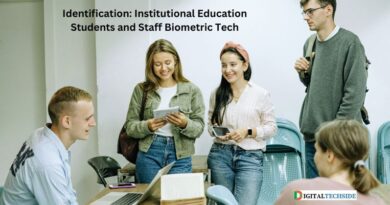Teaching Methods and Strategies: Enhancing Education
Introduction
Being a teacher is a wonderful career that involves assisting in shaping the brains of future generations. In order to excel in this teaching methods and strategies style, educators must constantly improve their pedagogical approaches. This article is your road map to success, providing insightful tips and helpful guidance to help you develop into a more effective teacher.
Teaching Methods and Strategies: Enhancing Education
Teaching is an art, and like any other art form, it calls for a mastery of techniques and approaches to successfully pass on knowledge. This thorough guide will go into a different types of teaching techniques and approaches that will not only keep your students interested but also equip them with knowledge. This article will give you the tools you need to become a more effective educator, from revolutionary techniques to traditional strategies.
The Importance of Effective Teaching
Effective teaching goes beyond imparting information. It inspires students, fosters curiosity, and instills a love for learning. To achieve this, let’s explore some key teaching methods and strategies that have proven to be game-changers in the field of education.
Engaging Teaching Methods
1. Active Learning Techniques
Students are motivated to participate fully in the learning process through active learning. It involves group discussions, problem-solving exercises, and hands-on activities. By incorporating active learning into your lessons, you can make complex subjects more accessible and enjoyable.
2. Flipped Classroom
The flipped classroom model reverses traditional teaching. Students review instructional material at home and engage in interactive activities during class. This approach enhances engagement and allows teachers to focus on addressing individual learning needs.
3. Socratic Questioning
Asking challenging questions that encourage critical thinking is known as Socratic questioning. By using this method, you can guide students to discover answers on their own, promoting deeper understanding and retention of knowledge.
4. Gamification
Gamification integrates game elements into the learning process. It creates a competitive and enjoyable environment that motivates students to actively participate and learn. Incorporate quizzes, challenges, and rewards into your teaching to harness the power of gamification.
Effective Teaching Strategies
1. Differentiated Instruction
Recognize that each student has unique learning needs. Differentiated instruction tailors lessons to accommodate diverse abilities and learning styles. This strategy ensures that all students can grasp and apply the material effectively.
2. Assessment for Learning
Assessment should be an ongoing process that informs teaching. Regularly assess student progress through quizzes, assignments, and discussions. Use this information to adjust your teaching methods and provide timely feedback.
3. Technology Integration
Incorporating technology into the classroom can enhance the learning experience. Utilize multimedia presentations, educational apps, and online resources to make lessons more engaging and interactive.
4. Collaborative Learning
Encourage collaboration among students. Group projects and discussions foster teamwork and enable students to learn from one another. Collaborative learning also prepares students for real-world scenarios where teamwork is essential.
Conclusion
Teaching methods and strategies are not static, they evolve with the needs of students and advancements in education. By continuously exploring and implementing innovative approaches, you can become a more effective educator who inspires and empowers the next generation. Remember that teaching is about inspiring a passion for learning for life, not just passing on knowledge.
FAQs
Q: How can I motivate disengaged students?
Ans: Motivating disengaged students requires a personalized approach. Try to understand their interests and tailor your teaching to align with their passions. Also, consider using real-world examples and practical applications to make the subject matter relevant.
Q: What is the role of empathy in teaching?
Ans: Empathy is crucial in teaching. Understanding your students’ challenges and emotions allows you to provide support and create a positive learning environment. Show empathy by actively listening and being approachable.
Q: How do I maintain discipline in the classroom?
Ans: Consistency is key to maintaining discipline. Set clear expectations and consequences, and enforce them consistently. Additionally, create engaging lessons that minimize disruptions by keeping students focused on learning.
Q: What role does feedback play in teaching?
Ans: Feedback is essential for both teachers and students. It helps teachers refine their methods and provides students with guidance on their progress. Provide honest feedback that identifies areas for growth and identifies strengths.
Q: How can I adapt teaching methods for remote learning?
Ans: Remote teaching requires flexibility and technology integration. Utilize video conferencing tools, online resources, and interactive platforms to create engaging virtual lessons. Maintain regular communication with students to provide support.
Q: What is the future of teaching methods and strategies?
Ans: The future of teaching will likely involve even more technology integration, personalized learning pathways, and a focus on critical thinking and problem-solving skills. Staying adaptable and open to new approaches will be essential.

As a DIGITALTECHSIDE author, the majority of our articles have been focused on technology, blogging, business, lifestyle, social media, web design and development, e-commerce, money, health, education, entertainment, SEO, travel, and sports.
Contact us at digitaltechside@gmail.com if you have questions of anything.




